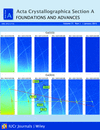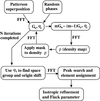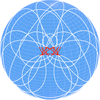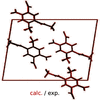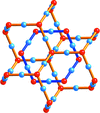issue contents
January 2015 issue

Cover illustration: Diffuse multiple scattering (DMS) provides a new tunable source of X-ray diffraction lines. When an appropriate X-ray wavelength is selected, a triple convergence of diffraction lines unique to a given set of crystal lattice parameters can be produced. This technique is relatively insensitive to experimental errors and provides an important update to the method used by Kathleen Lonsdale in 1947 [Nisbet et al. (2015). Acta Cryst. A71, 20-29].
editorial

advances
research papers
 access
access access
accessfoundations
research papers




 access
access access
accessshort communications
international union of crystallography



 journal menu
journal menu








